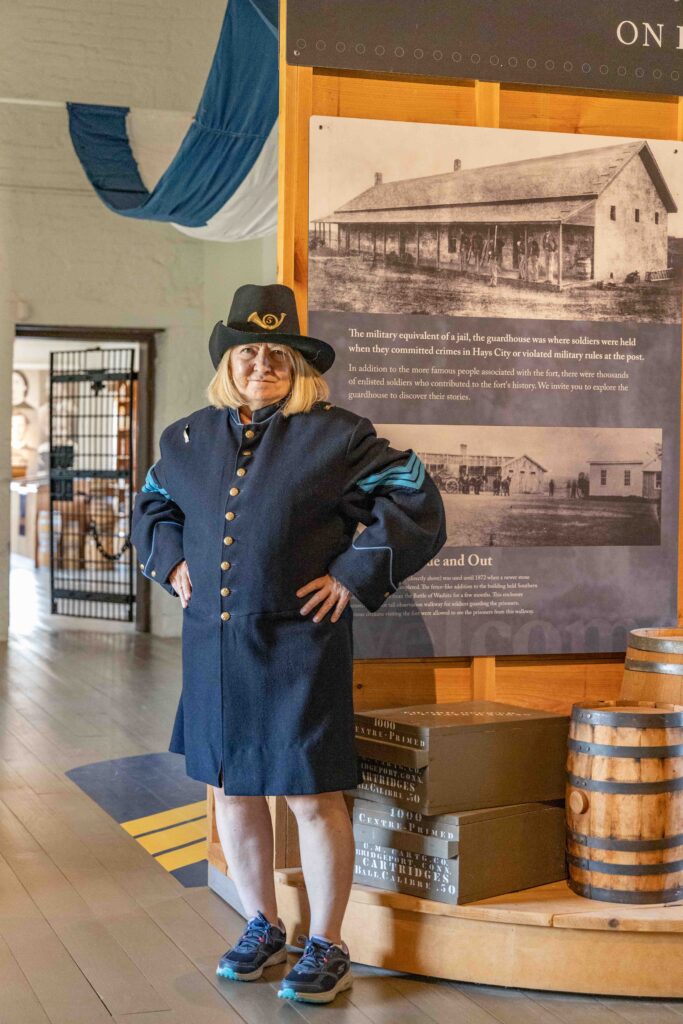The United State established Fort Hays (originally called Fort Fletcher) as a U.S. Army post in 1865. The fort’s function, like other frontier forts, was to protect railroad workers and settlers as they traveled west. They were also tasked with enforcing treaties with Indian tribes.
The fort grounds included 7,650 acres of land, but its 45 buildings were situated on just 65 of those acres. Today only four buildings remain, as well as a visitor center, on a fraction of the original fort property.
Honestly, when we first saw the property, we thought it would be a quick visit. But, besides the four buildings, there are several foundations that outline other former buildings. Those foundations, together with signage throughout the property and exhibits inside the existing buildings, make a great self-guided tour. We ended up spending several hours exploring Historic Fort Hays.
Start at the Visitor Center
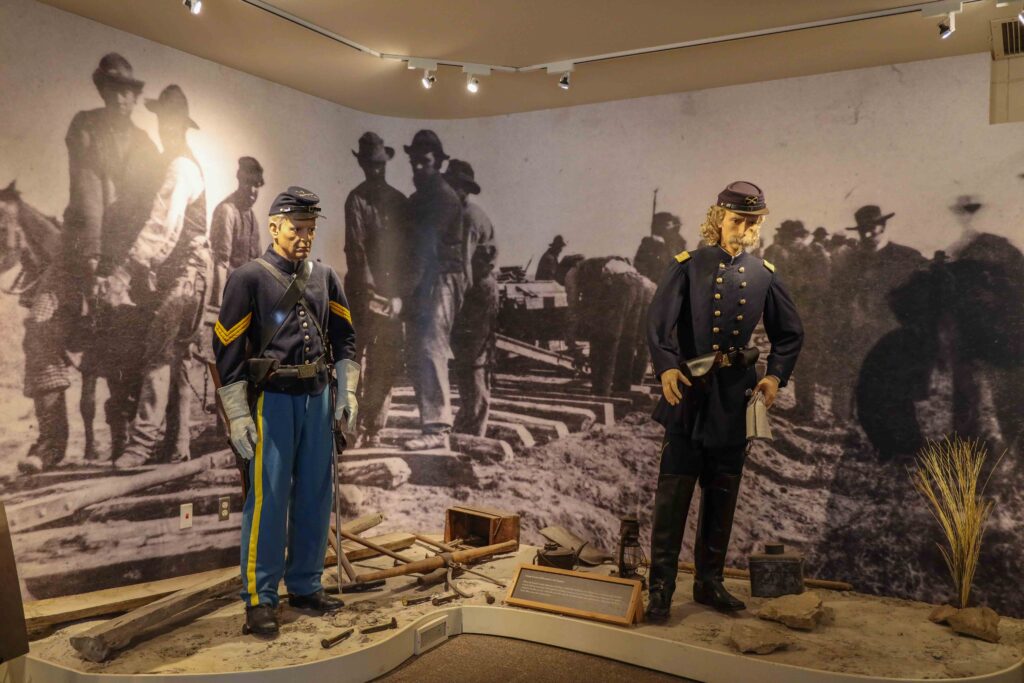
Begin with the 15-minute film in the visitor center, then browse the exhibits. Both the film and the exhibits focus on the clash between the U.S. government and local Indiana tribes. Early on, Indians were allowed to live anywhere west of the Mississippi River. But as the U.S. expanded westward, the Indian tribes in Kansas were eventually relocated to what is now Oklahoma.
Check Out the Officers’ Quarters
When you leave the visitor center, you’ll walk over to Officers’ Row. Originally there were ten houses, built between 1867 and 1870. Today, two homes and seven foundations remain. In fact, those two houses were auctioned off and moved into Hays as private residences in 1902. Fortunately, they were able to get two of them back and placed on their original foundations.
These homes are partial duplexes. Two families lived in the partial duplexes. They each had their own parlor and one bedroom, but they shared the dining room and kitchen.
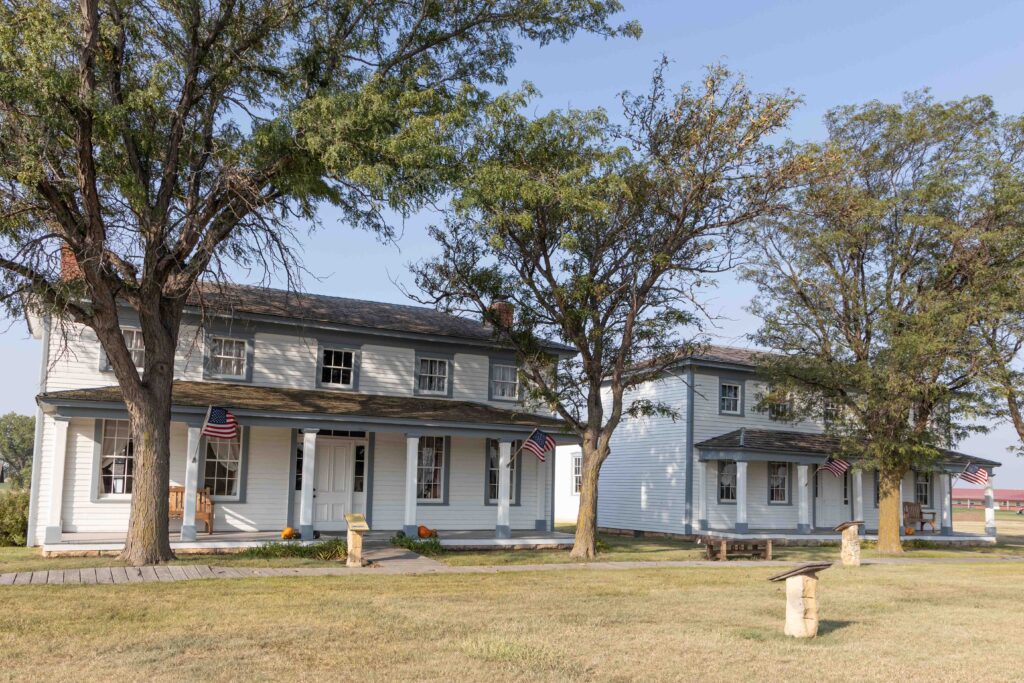
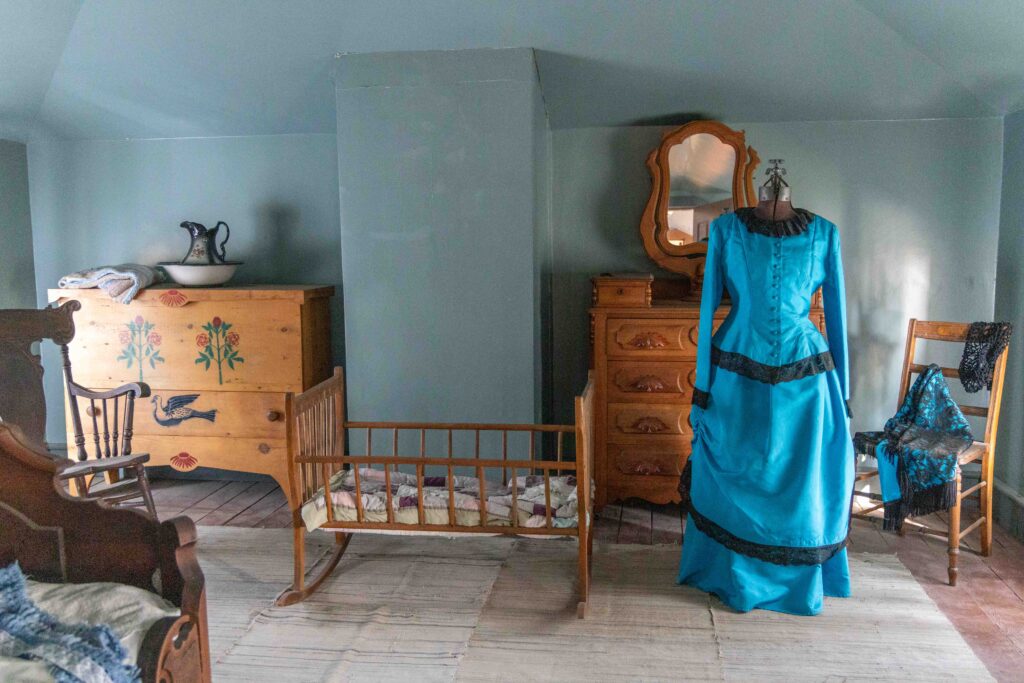
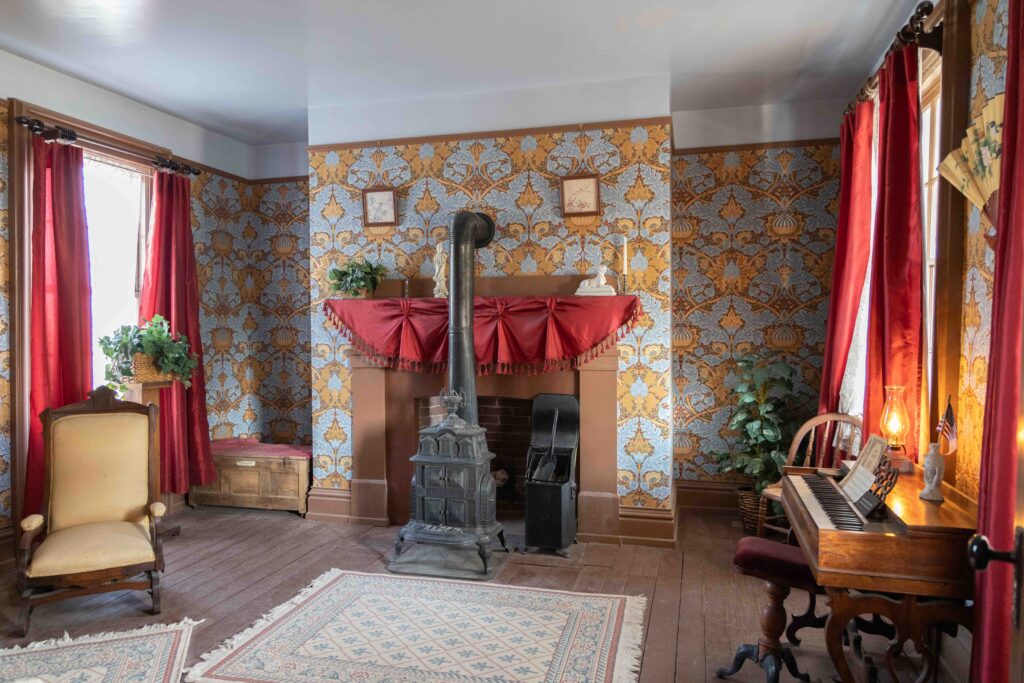
Although a little cramped for two families, I mentioned I wouldn’t mind living in that house—if it had indoor plumbing, a modern kitchen, and central air conditioning.
Not all officers were lucky enough to live in the houses. If there were more officers than homes, lower-ranking officers lived in tents, whether they were single or had a family. It got pretty darned frigid in those tents in the winter, despite some having wood stoves, and blistery hot in the summer.
A Cholera Outbreak Hits Fort Hays
As you make your way to the Guardhouse, you’ll pass more signage. Be sure to stop and read it to get a good idea of what the troops endured, including a cholera outbreak in the summer of 1867.
There were four wells at the fort. Unfortunately, the water would occasionally become contaminated, particularly the well closest to the latrines. The contaminated water may have been the cause of the cholera, which claimed 23 military victims in one month.
The Legend of the Blue Light Lady
Elizabeth Polly was the fort doctor’s wife. During the cholera outbreak, she visited and comforted hospitalized patients. She, too, contracted cholera. Before dying, she asked to be buried on what was known as Sentinel Hill, part of the fort. She often went for walks there. When the top of the hill proved too rocky to dig a grave, she was buried on the side of the hill. She was wearing a blue dress and white bonnet. Four posts marked her grave.
Legend has it that four men stole the posts from the grave, and shortly after, each of them died a violent death. Several years later, people started reporting seeing an apparition of a lady walking, wearing a blue dress and white bonnet. Some say they saw a hazy blue light around her. Her apparition continues to this day.
Don’t Miss the Guardhouse
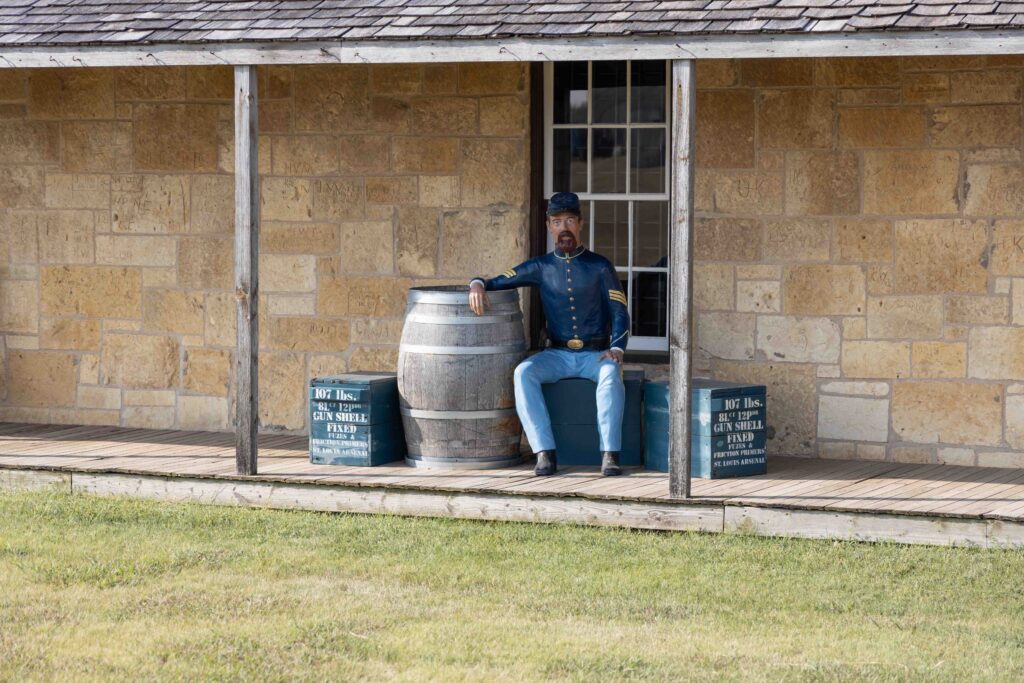
The guardhouse was my favorite stop, because it had the most fascinating and informative exhibits. The guardhouse serves as the military version of a jail. Originally, a wooden structure served as the guardhouse. The stone building that you will tour was completed in 1872.
Jail cells still exist at the far end of the building. We learned that only those being held for the worst offenses were confined to the solitary cells. The rest of the detainees stayed in the guardhouse but outside of the cells.
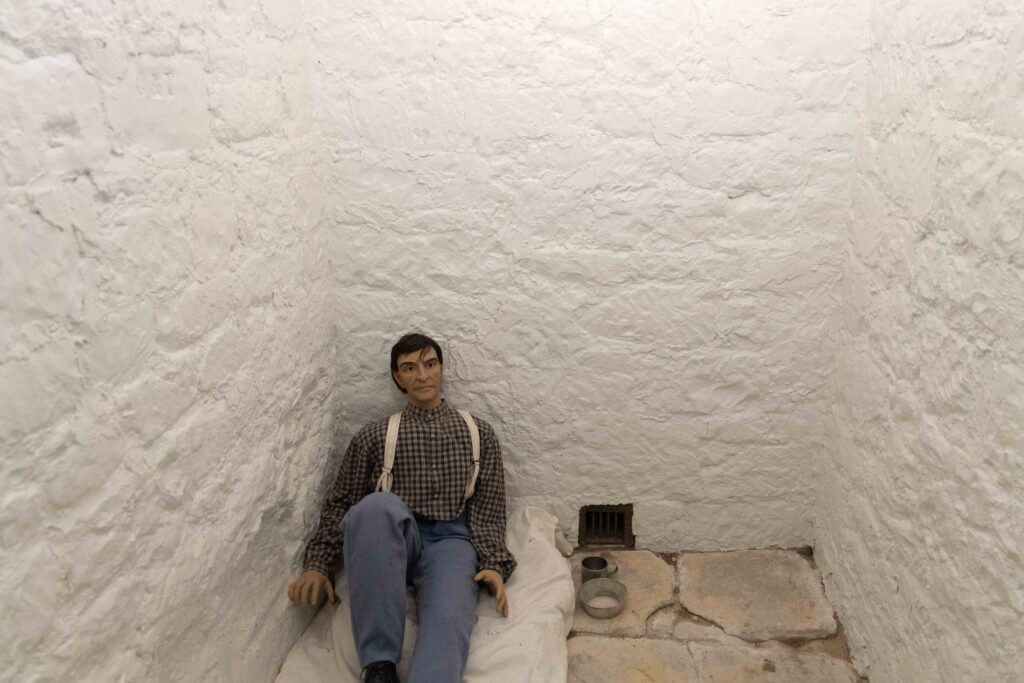
Learn About Life at the Fort
The exhibits in the guardhouse that I found most interesting were those that tell of the soldiers’ daily lives. While many of them joined the military with romantic dreams of the wild west, they actually spent most of their time performing duties around the post. It could be anything from tending the garden to cleaning the barracks.
Come payday, which was usually once every other month, work sometimes stopped as soldiers went into nearby Hays City to spend their money at saloons, gambling houses, and dance halls.
At the uniform exhibit, I couldn’t resist trying one on. It’s unbelievable how heavy and warm the coat was. Can you imagine wearing that out in the hot sun in the summer?
Also inside the guardhouse is a replica of a post trader’s store. This is the equivalent of a PX on today’s military bases. Owned and run by a civilian, this is where soldiers would buy everything from beer and cigars to groceries and washboards. Even diaper pins!
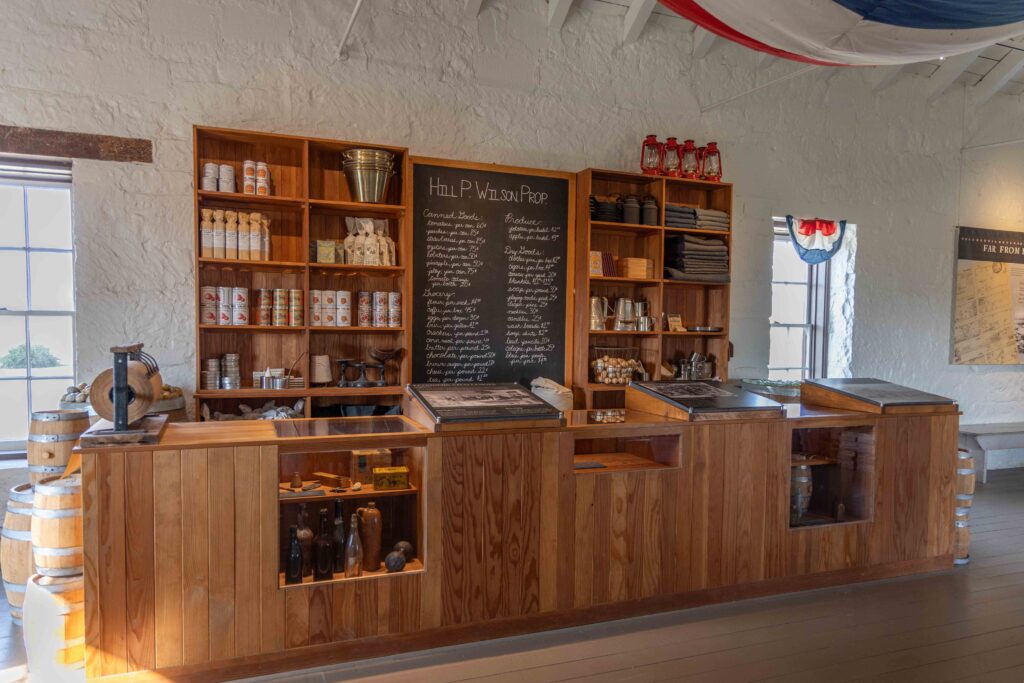
Blockhouse: Barrack or Fortress?
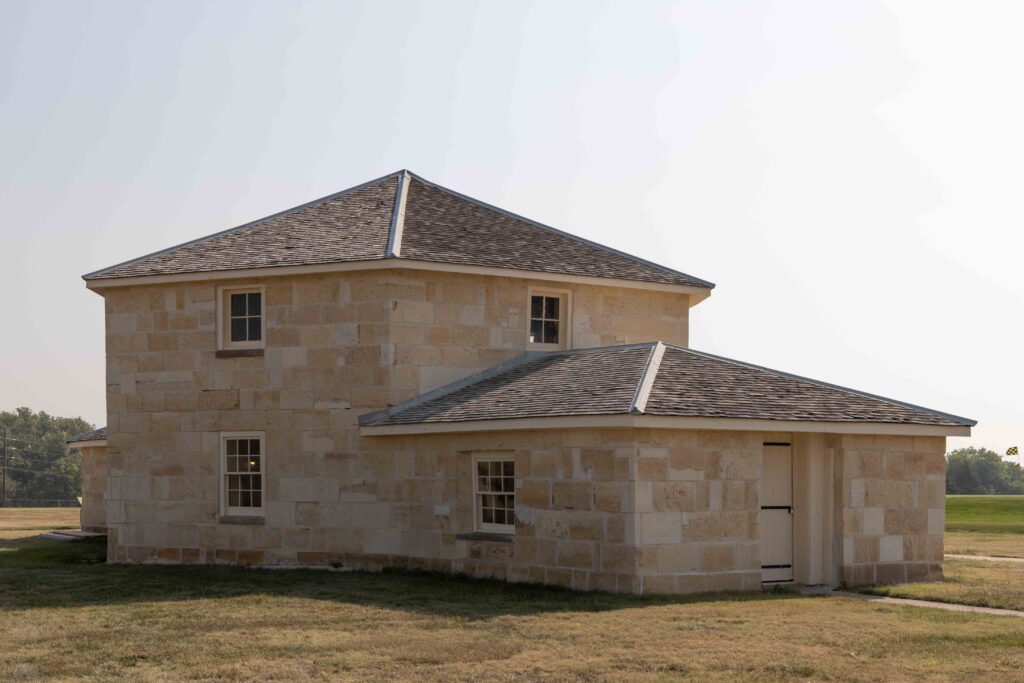
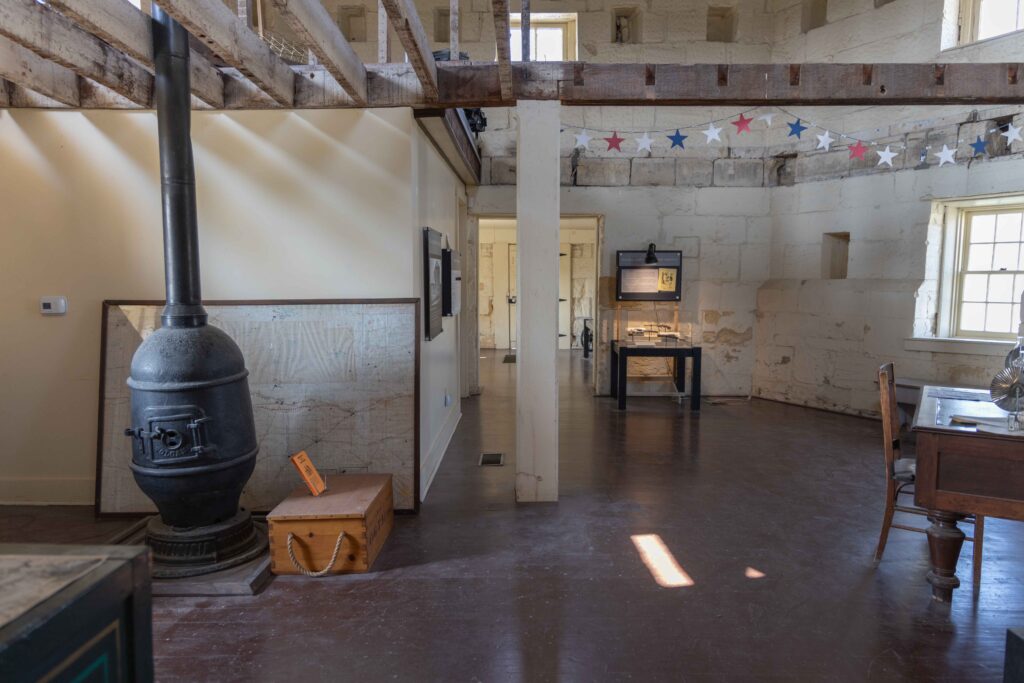
The last standing building we visited was the Blockhouse. Originally planned to serve as a barrack, the building instead became headquarters and living quarters for commanding officers. (Wood barracks had been constructed by the time the Blockhouse construction was completed.)
Exhibits in this building mainly cover weapons. stories of commanding officers, and the building itself. A blockhouse is defined as a structure used as a fortress. Exhibits point out rifle slots in the walls that would allow firing on attackers and possible framing for a catwalk, among other hints of a fortress. As it is, Fort Hays was never attacked, but why would they construct a building like that when it was meant to be a barrack?
Stories of General Custer, Buffalo Bill Cody, and Wild Bill Hickok
It seems we don’t visit any old west cities without hearing stories of legendary old west figures. In this case, the names of General Custer, Buffalo Bill Cody, and Wild Bill Hickok came up.
We learned that occasionally the 7th U.S. Cavalry, which Custer commanded, was stationed at Fort Hays. Buffalo Bill Cody served as an army scout and also stayed for a time at Fort Hays. Although Wild Bill Hickok wasn’t in the military, he did serve for a while as a law officer in Hays City.
Dance Hall Disguised as a Chapel
We continued our tour around the grounds, reading the signs pointing out where various buildings once stood and stories about them. Among them were the bakery (bread had to be left in the open for 48 hours before it could be eaten); the ice house built into a hillside for insulation; and the chapel.
Officers’ wives wanted a dance hall. Unfortunately, military regulations would not allow that. So, the women requested a chapel instead. A building was moved from an abandoned fort to Fort Hays to serve as a place of worship. They partitioned a small section of the building off to use as the post school. That section also included a few benches and a pulpit, so it doubled as a chapel. The rest of the building became the dance hall.
If You Visit Historic Fort Hays
Historic Fort Hays, located at 1472 US Highway 183 Alt in Hays, Kansas, (four miles south of I-70 exit 157) is open Wednesdays through Sundays. Admission is free. Check the website for other details.
Other articles in this issue of Midwest Wanderer Explores…
Exploring the Kansas Gunsmoke Trail in Wichita
Exploring the Kansas Gunsmoke Trail in Dodge City
Exploring the Kansas Gunsmoke Trail in Hays
Exploring the Kansas Gunsmoke Trail in Abilene
Wild West Wichita Comes Alive at Old Cowtown Museum
The Keeper of the Plains and Mid-America All-Indian Center
Time Travel at the Wichita-Sedgwick County Historical Museum
Boot Hill Museum: Discover the Wild Wet Legacy
Home of Stone: The Mueller-Schmidt House—A Living Heritage
Boot Hill Distillery: Soil to Sip in a Historical Location
Cowtown to Carousels: Explore the Dickinson County Heritage Center

